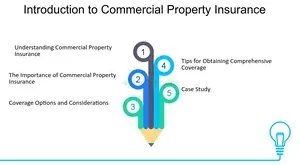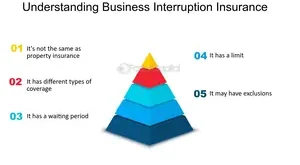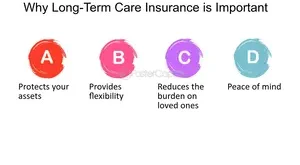Life insurance is a critical component of a comprehensive financial plan. It provides financial protection for your loved ones in the event of your death, ensuring they can maintain their standard of living and meet future financial obligations. This guide explores the importance of life insurance, types of policies available, and tips for selecting the right coverage for your needs.
Why Life Insurance is Important
Financial Protection for Your Loved Ones
The primary purpose of life insurance is to provide financial security to your beneficiaries after your death. The death benefit can cover various expenses, such as funeral costs, outstanding debts, mortgage payments, and everyday living expenses, ensuring your family is financially stable during a difficult time.
Income Replacement
Life insurance can replace lost income, helping your family maintain their lifestyle. This is especially important if you are the primary breadwinner, as it ensures your dependents can continue to meet financial obligations such as education costs, healthcare expenses, and household bills.
Debt Repayment
Life insurance can help pay off outstanding debts, such as mortgages, car loans, and credit card balances, preventing your loved ones from being burdened with these financial responsibilities. This can also protect assets from being sold to cover debts, preserving your family’s financial health.
Estate Planning
Life insurance can be a valuable tool in estate planning, providing liquidity to pay estate taxes and other expenses. This ensures that your heirs receive the maximum value from your estate and helps avoid the need to sell assets to cover tax liabilities.
Business Continuity
For business owners, life insurance can provide funds to ensure the continuity of the business. It can be used to buy out a deceased partner’s share, cover business debts, or provide a financial cushion during the transition period.
Types of Life Insurance Policies
Term Life Insurance
Term life insurance provides coverage for a specified period, typically 10, 20, or 30 years. It pays a death benefit if the insured dies within the term. Term policies are generally more affordable than permanent life insurance and are suitable for those needing coverage for a specific period, such as until children are grown or a mortgage is paid off.
Whole Life Insurance
Whole life insurance offers lifelong coverage with a guaranteed death benefit and a cash value component that grows over time. Premiums are fixed, and the policy accumulates cash value that can be borrowed against or withdrawn. Whole life insurance is more expensive than term insurance but provides lifelong coverage and a savings component.
Universal Life Insurance
Universal life insurance is a type of permanent life insurance with flexible premiums and adjustable death benefits. It includes a cash value component that earns interest. Policyholders can adjust their premiums and death benefits as their needs change, providing flexibility and the potential for cash value growth.
Variable Life Insurance
Variable life insurance combines death benefit protection with investment opportunities. The cash value can be invested in various sub-accounts, such as stocks and bonds. While this offers the potential for higher returns, it also comes with higher risk, as the cash value can fluctuate based on investment performance.
Simplified Issue and Guaranteed Issue Life Insurance
Simplified issue life insurance requires no medical exam and is issued based on a health questionnaire. It’s suitable for those who need quick coverage or have health issues that might make traditional policies difficult to obtain. Guaranteed issue life insurance requires no medical questions or exams and is available to all applicants, usually at higher premiums and with lower death benefits.
Choosing the Right Life Insurance Policy
Assess Your Needs
Determine the amount of coverage you need based on your financial obligations, income, and the needs of your dependents. Consider factors such as debt, future education costs, and ongoing living expenses.
Compare Policies and Providers
Research various life insurance providers and compare their policies. Look at factors such as coverage options, premiums, policy features, and the financial strength of the insurer. Comparing multiple quotes can help you find the best coverage at competitive rates.
Understand Policy Details
Carefully read the policy documents to understand the terms, conditions, and exclusions. Pay attention to the policy’s coverage limits, premium structure, and any additional riders or options. Knowing the specifics of your policy helps avoid surprises and ensures it meets your needs.
Consider Your Budget
Choose a policy that fits your budget while providing adequate coverage. While permanent life insurance offers lifelong protection and cash value accumulation, it is more expensive than term insurance. Balance your need for coverage with your ability to pay the premiums over the long term.
Review and Update Regularly
Regularly review your life insurance coverage to ensure it remains adequate as your circumstances change. Major life events such as marriage, the birth of a child, or purchasing a home may require adjustments to your coverage. Updating your policy ensures it continues to meet your family’s needs.
Common Life Insurance Myths
Myth 1: Life Insurance is Only for the Elderly
Life insurance is important for individuals of all ages, especially those with dependents or significant financial obligations. Purchasing life insurance at a younger age can be more affordable and ensures long-term financial protection for your loved ones.
Myth 2: Employer-Provided Life Insurance is Sufficient
While employer-provided life insurance is a valuable benefit, it may not provide enough coverage to meet your family’s needs. Additionally, this coverage is typically lost if you change jobs. Having a personal life insurance policy ensures continuous and adequate coverage.
Myth 3: Life Insurance is Too Expensive
Life insurance can be affordable, especially term policies. The cost depends on factors such as age, health, coverage amount, and policy type. Comparing quotes and understanding your needs can help you find an affordable policy that provides necessary protection.
Conclusion
Life insurance is a vital component of a comprehensive financial plan, providing financial security for your loved ones in the event of your death. By understanding the types of policies available, assessing your needs, and carefully selecting the right coverage, you can ensure your family is protected and maintain peace of mind. Regularly reviewing and updating your policy ensures it continues to meet your evolving needs, providing long-term financial stability and security.
 kisskh kisskh | Asian Dramas & Movies
kisskh kisskh | Asian Dramas & Movies









